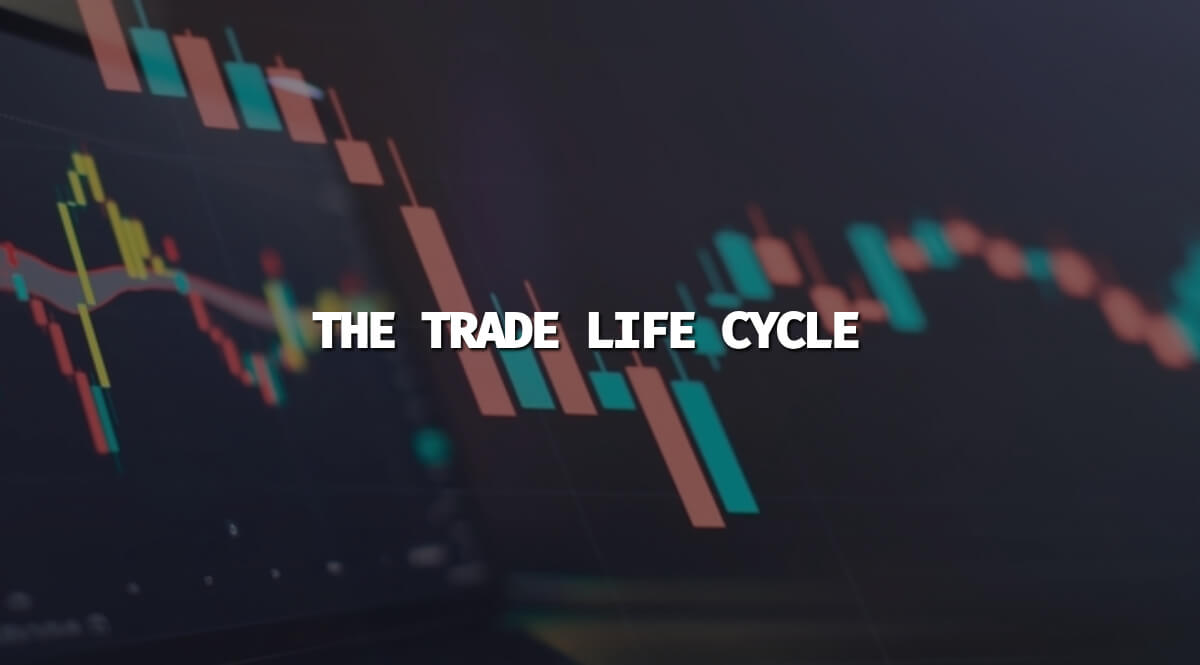What is The Trade Life Cycle, and How Does it Work Exactly?
Have you ever thought about a trade life cycle and why traders should know more about it? Is it true that every trader goes through different stages throughout their trading career, and how does it work exactly?
First of all, the trading cycle isn’t just a myth. It exists, and every professional trader has to go through it.
Trade processing may not be glamorous in finance, but managing trades properly throughout their life cycle is important.
The main reason is for the trade to retain its significance. However, before we know all the phases of the trade life cycle, shall we?
What is the definition of the trade life cycle?
The trade life cycle is a series of events and activities that occur after a trade occurs. One of the crucial parts of the very first phase is the client’s onboarding process.
In this phase, an institution establishes a key relationship with a new client.
So, there are five crucial phases of the trade life cycle, which are:
Pre-Trade
Trade Execution
Trade Clearing
Trade Settlement
Position and Risk Management.
Why is the life cycle crucial?
The trade life cycle is crucial for the following reasons:
All the participants and investors who participate in the trading process.
Broker dealers, banks and other financial institutions that make trading easier.
What is crucial to note is that this particular trading system/cycle includes more than just matches which lead deals. In addition to the stronger matches that lead deals, it demands an exacting and comprehensive process in three phases:
Before
During
After the trade.
What is a trade?
In trade, buyers and sellers exchange cash for stocks, bonds, or Forex trading. It’s a transaction between people buying and selling financial assets. Forex is a “foreign exchange” for newbies, which refers to the transaction of two different currencies in a trade.
Trading requires a clear strategy and a pre-planned trading plan for each trade. Protocols and systems must be developed to capture trade data and ensure legal compliance.
Trading needs a clear strategy and plan for each trade. Protocols and systems must be created to capture trade data and follow the law.
So, let’s get through all the five key trading phases, shall we?
First phase: Pre-Trade
The first phase, perhaps “before all the phases,” is the pre-trade process. It involves available protocols and developing systems to capture trade data, ensure legal compliance, and include all the legal stuff.
Besides that, the pre-trade phase includes the following:
Managing collateral
Assessing counterparty credit risk
Mitigation of position risks.
The trade life cycle also encircles the following:
Trade execution
Trade affirmation
Trade reconciliation.
It all includes the massive controls that are crucial for maintaining the integrity of all trading activities.
Second phase: The execution of the trade
When the pre-read phase is done, we’ve come to the trade execution phase in the trade life cycle, called “the second phase”.
This is the most important phase in this trade life cycle because it involves all the necessary elements.
When a client joins an institution’s system, the institution starts trading on their behalf.
There are numerous reasons why clients do trade. Some of them are:
Market view reactions
Portfolio diversification
Position hedging
Cash need.
However, they usually tell the institution what they want regarding price, timing, and conditions.
In these situations, the institution handles the trade and informs the client about trading events and systems.
Remember that some particular institutions trade for their purposes and sake.
Third phase: The settlement of the trade
Once the second phase is done, we’ve come to the settlement of the trade. It means that even though traders execute the trade in the trade life cycle, the transaction isn’t completed yet.
You need to keep in mind the three crucial dates that are in line with a trade:
Trade date: Once all the counterparties join in trading.
Value date: When they must exchange cash for currencies or securities.Settlement date: Once that exchange happens. It can vary the date value.
Remember the following two things:
A settlement failure occurs if the trade does not settle as scheduled.
Once the execution is done, what makes the trade final is the settlement process and clearing. Clearing is the determination and verification of the transaction details.
On the other hand, settlement completes the transaction process.
What are the steps in the clearing process?
Steps in the clearing process include the following:
Trade Capture
Trade Enrichment
Adding additional information such as: value date, securities identifiers, legal details, and counterparty information.
Trade Validation
Trade Confirmation/Affirmation
Trade Reporting:
Settlement Instructions, which mean preparing instructions for the settlement process.
Fourth phase: Settlement of the trade
The fourth phase is known as the trade settlement. It means the finalization of the prior transaction in the process. It’s done like this:
Exchanging value
Including careful safeguards and management.
What are the two key methods of settlement?
If you didn’t know so far in this phase of the life cycle of trade, there are two crucial settlement methods:
DVP: Delivery-versus-payment
FOP: Fre-of-Payment.
DVP is when traders exchange payment and securities simultaneously, while FOP is the activity in which traders do the payment separately.
Fifth phase: Risk Management and Ongoing position
The last but not least crucial phase in this cycle is Risk Management, and the Ongoing position in this last phase is handling the variety of positions within a trading book of the institution.
It involves the following:
Management of the corporate actions
Counterparty credit risk
Trade reconciliation, profit measurement and loss (P&L), risk, and sensitivity.
It also includes the following:
Preparation of internal and external reports
Ensurement that trade details align with regulatory requirements
Observation of the interest rate that has an impact on the portfolio.
Bottom line
The trade life cycle nowadays is essential for all investment managers, financial institutions and market participants. There are different stages involved in this process. By managing these stages well, institutions can follow the rules, reduce risks, and keep trading activities honest.
The post What is The Trade Life Cycle, and How Does it Work Exactly? appeared first on FinanceBrokerage.
































